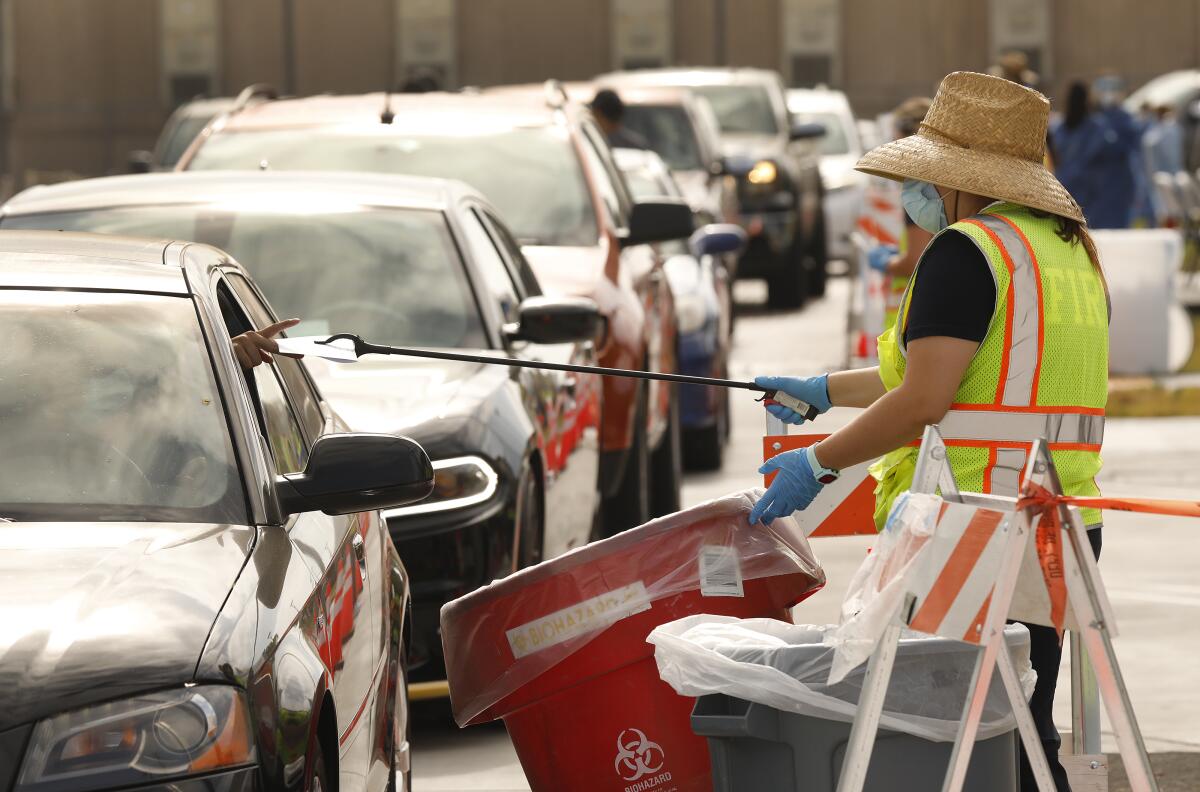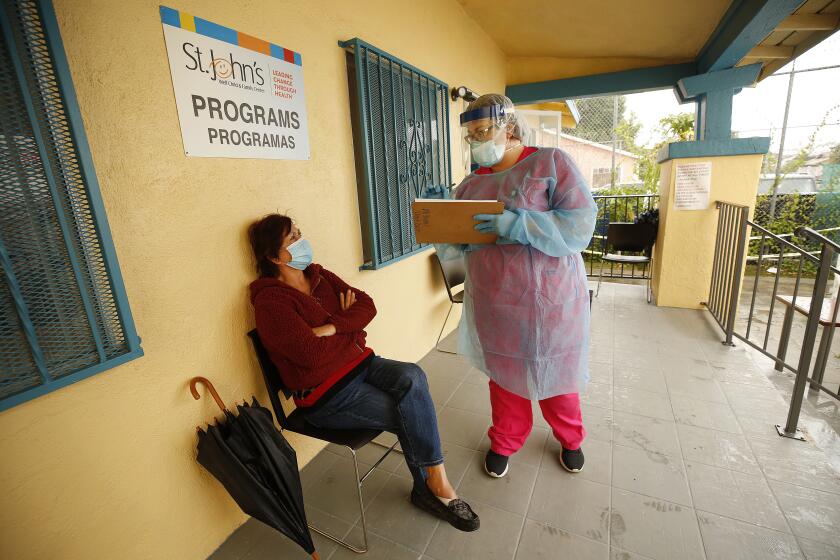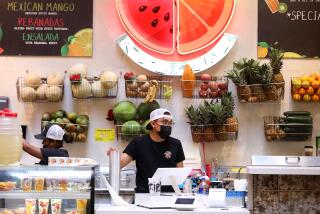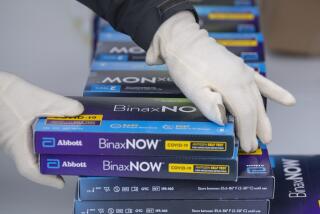L.A. County expands coronavirus testing in hard-hit Black, Latino communities

Los Angeles County is launching six testing locations in hot spot communities where Black and Latino residents have been disproportionately hit by the coronavirus, officials announced Wednesday.
Test sites will be added in Montebello, South Gate, Azusa, Panorama City, Compton and Downey, which together have accounted for more than 10,370 infections.
The county is also expanding testing in four other areas: Bellflower, Pomona, El Monte and East Los Angeles, which have tallied more than 9,300 infections combined.
The additions — part of a $4-million investment from the Centers for Disease Control and Prevention — will boost testing capacity by more than 65%, health officials said.
The county previously announced plans to expand testing beyond roughly 26,000 each day, as infections and hospitalizations have continued to surge.
More than 143,200 COVID-19 infections have been confirmed in L.A. County and the death toll is nearing 4,000.
The mortality rate and the rate of positive infections have been higher among Black and Latino residents than any other demographic. Of the 3,598 county residents who have died where race and ethnicity has been identified, 45% of the deaths have occurred among Latino residents, 26% among white residents, 16% among Asian residents, 11% among Black residents and less than 1% among Native Hawaiian/Pacific Islander residents.
Latinos now twice as likely to get coronavirus than whites in L.A. County
According to hospitalization data from March 1 to July 11, Latino residents have accounted for 72% of those hospitalized, and Black residents have accounted for 5%. Asian residents have accounted for 4%, while white residents have accounted for 2%. The remainder includes people whose race was not identified or whose race was identified as “other.”
Communities with high levels of poverty are four times as likely to die from the virus when compared to residents in higher income brackets, health officials have said. That statistic is a reflection of various realities, including the effects of long-standing systemic racism and discrimination that has resulted in a lack of access to the resources necessary for good health.
“This data is alarming and requires urgent focus to do more to expand access to testing and address the health equity issues that COVID-19 makes tragically clear every day,” said L.A. County Department of Health Services director Dr. Christina Ghaly.
“We must remember that testing is only one factor. There are underlying reasons why communities of color are disproportionately impacted by worse outcomes of COVID-19 — long-standing structural and systemic issues, including social determinants of health, that the county is working to address and mitigate amidst this pandemic.”
That message is one that officials repeated during protests over the death of George Floyd at the hands of Minneapolis police.
“When I report each week that we have seen elevated numbers of Black deaths in this county due to COVID-19, I am reporting on the consequences of these long-standing inequities,” Public Health Director Barbara Ferrer said in June.
In police body camera footage minutes before his death, Floyd is heard telling police that he “just had COVID,” something the medical examiner’s autopsy also revealed.
Expanding communication to reach communities who have been hit by the virus is one of the county’s priorities, Dr. Erika Flores Uribe of L.A. County’s Department of Health Services said Thursday. Those without internet access can call 211 to find a test site, she said, which includes drive-through and walk-up services.
Uribe also emphasized that anyone can get tested, regardless of residency. “No one is going to report your immigration status.”
Part of the county’s communication efforts is to help people create isolation and quarantine plans in case they contract the virus, Uribe said. She said she’s heard from individuals who have tested positive for COVID-19 and have had to isolate inside their cars to remove themselves from families in tight living quarters.
In recent weeks, officials throughout the state and in L.A. County have shifted their messaging on testing. After widespread encouragement for all residents to get tested, officials are now stressing the need for the most vulnerable to be prioritized. Those include people with symptoms and those who’ve come into contact with a person known to have been exposed to the virus, live in group or institutional settings, or are essential workers.
The shift comes amid a nationwide testing shortage and as demands have outpaced availability.
Since April 17, coronavirus infection rates have surged in L.A. County’s poorer neighborhoods, while cases have risen far more slowly in richer areas.
“At this point in this rapidly evolving crisis, it is important to reserve testing for those who have a medical or public health reason for it,” the county said in a statement Thursday.
“While Los Angeles County currently has enough testing supplies to meet the needs of those who need to be tested, the number of COVID-19 cases are on the rise here and throughout the country. Let’s work together to reserve testing for those with a medical or public health need.”
Officials have increasingly stressed that a negative test result does not necessarily mean a person is in the clear. If tested too soon after an exposure, a viral load might not be high enough to be detected, which would result in a false negative. And as delays in test results have increased from two to 10 days in some instances, a person could receive a diagnosis that doesn’t accurately reflect his or her current health situation.
More than 1 million people have been tested for the virus in L.A. County. The seven-day average for daily positive infections has fluctuated over the past two weeks, but has spiked above 10%. On Thursday, the rate stood at 8.8%, according to California’s Health Department. The state’s safety threshold is 8% or less.
More to Read
Sign up for Essential California
The most important California stories and recommendations in your inbox every morning.
You may occasionally receive promotional content from the Los Angeles Times.













